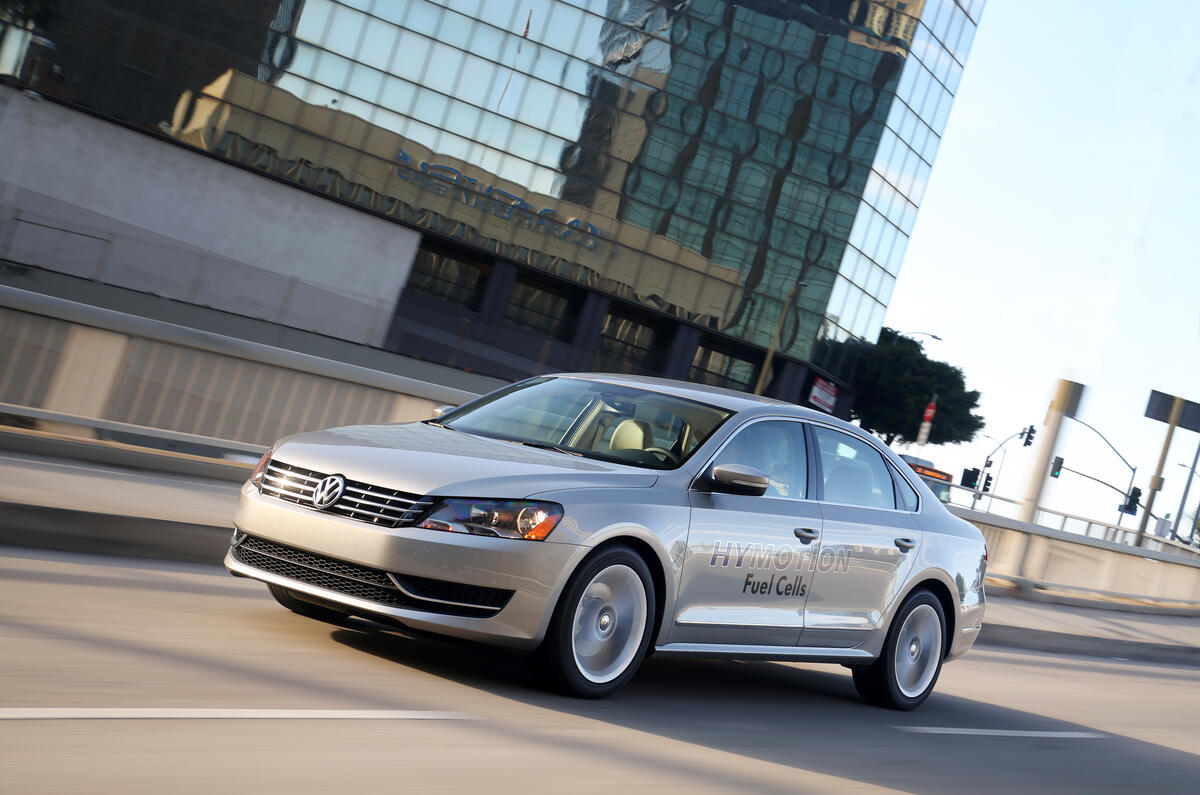The Volkswagen Group is co-operating in the development of a new hydrogen fuel cell that could be used for a future production model, a German patent application has revealed.
The patent application, lodged jointly by Volkswagen and German company Kraftwerk Tubes in July 2021 but only recently made public, covers developments made for a hydrogen fuel cell stack and hydrogen fuel cell vehicle that officials suggest could achieve a range of up to 2000km (1243 miles).
Key among the technologies being pursued by Volkswagen and Kraftwerk Tubes is a ceramic membrane.
Described as being cheaper than the polymer membrane used by Hyundai and Toyota, it is considered crucial to the future volume production of hydrogen fuel cells for automotive applications.
The ceramic membrane also operates without platinum, a precious metal that up until now has proven to be one of the big financial hurdles to large-scale hydrogen fuel cell production.
In an interview with Germany’s Business Insider, Kraftwerk Tubes CEO Sascha Kühn cited the ceramic membrane as the “big difference” between the fuel cell stack being developed in co-operation with Volkswagen and existing fuel cell stacks.
“The advantage of our solution is that it can be produced much cheaper than polymer fuel cells and it does not require any type of platinum,” he said.
A further advantage of the ceramic membrane, according to Kühn, is that it does not need to be moistened in the operation process, alleviating concerns of it freezing in winter, attracting mould in high-humidity environments and drying out in high temperatures.
It also generates heat that can be used to run a car’s heating and air conditioning, leading to greater overall energy efficiency.
Despite lodging the patent together, Kühn confirmed the fuel cell development being carried out by Kraftwerk Tubes is not exclusive to Volkswagen.
“Regardless of the manufacturer, the goal is for our technology to be launched in a series-production vehicle by 2026. We are talking about a volume of 10,000 vehicles, spread over several car manufacturers,” he said.
Kühn suggested a suitable production vehicle could offer a range of up to 2000km with the new hydrogen fuel cell stack.
Details of Volkswagen’s partnership with Kraftwerk Tubes come after former CEO Herbert Diess dismissed suggestions the German car maker was planning to launch a hydrogen-fuelled model to rival the second-generation Toyota Mirai or Hyundai Nexo.






Join the debate
Add your comment
What a load of tosh.
Every fuel cell produce heat as byproduct of the redox , the more heat it produces the less efficient the system is. Aside of the lack of humidification I really can't see how these ceramic based membranes are more efficient given the current polymer ones do produce heat that it is indeed harvested to keep the cell warm (to help with the reaction) and heat the cabin in winter (that's why FCEVs do lose some range in winter but less than EVs that have to actively use energy to heat the cabin and the battery) .
And how they manage to achieve 1243miles of range when the most advanced and efficient FCEV on the market, the Toyota Mirai offers between 350 to 400miles of range but sacrificing a lot of the internal space for the sake of the hydrogen tanks?